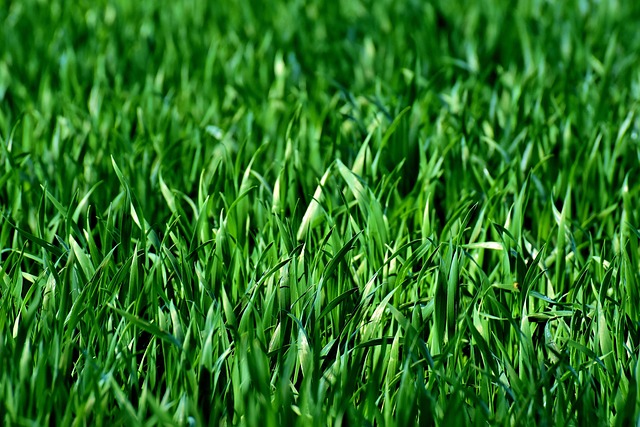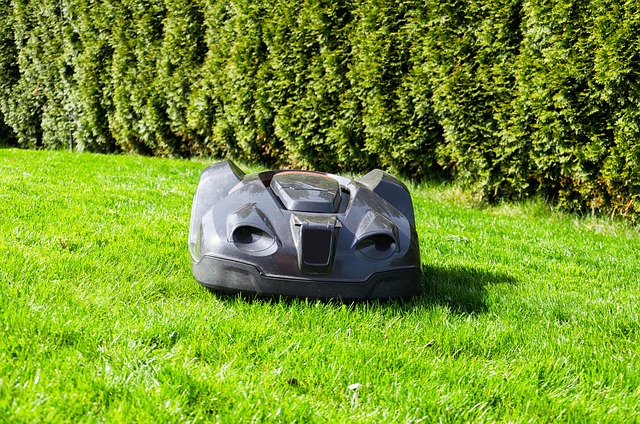Lawn nutrient enrichment programs, combining soil testing, targeted fertilizers, and herbicide treatments, enhance lawn health and reduce maintenance needs in Wheat Ridge. Herbicide applications are vital for managing right-of-way vegetation, promoting desirable grasses while suppressing weeds. This approach contributes to balanced, sustainable lawn ecosystems that require less upkeep and resist pests and diseases, ultimately improving neighborhood aesthetics. Effective management relies on selecting herbicides suited to local conditions, strategically timed applications, and customization based on grass species, soil type, and climate. Regular soil testing and proper equipment calibration ensure precise nutrient applications and safe, effective herbicide use.
Lawn plant nutrient enrichment programs play a vital role in maintaining lush, healthy grass. This article explores these programs, focusing on how herbicide application contributes to effective right-of-way vegetation management in Wheat Ridge. We’ll delve into best practices for implementing nutrient enrichment strategies, ensuring optimal grass growth and overall landscape aesthetics. By understanding these methods, homeowners and professionals can achieve vibrant lawns while managing weeds efficiently.
- Understanding Lawn Plant Nutrient Enrichment Programs
- The Role of Herbicide Application in Right-of-Way Vegetation Management
- Best Practices for Implementing Lawn Nutrient Enrichment Strategies
Understanding Lawn Plant Nutrient Enrichment Programs

Lawn plant nutrient enrichment programs are designed to enhance the health and vibrancy of your lawn, addressing specific nutritional deficiencies that may exist. These programs typically involve a combination of techniques such as soil testing, targeted fertilizer application, and herbicide treatment for unwanted vegetation. In Wheat Ridge, for instance, understanding the unique environmental factors affecting right-of-way vegetation is crucial. Herbicide application plays a significant role in managing these areas, ensuring that only desired grasses and plants thrive while suppressing weeds that can compete for nutrients.
By implementing such programs, homeowners and landscape professionals can achieve lush, green lawns that are not just aesthetically pleasing but also require less maintenance over time. Proper nutrient enrichment not only promotes healthier growth but also helps build resilience against pests and diseases, contributing to a balanced and sustainable lawn ecosystem. This is particularly important in areas like Wheat Ridge where managing vegetation along rights-of-way can be challenging while maintaining the overall aesthetic appeal of the neighborhood.
The Role of Herbicide Application in Right-of-Way Vegetation Management

In the context of managing vegetation along rights-of-way, herbicide application plays a pivotal role in Wheat Ridge and surrounding areas. This method is particularly effective for controlling unwanted plants that compete with desired turfgrass species. By carefully selecting herbicides appropriate for the local climate and vegetation types, landscaping managers can achieve a healthy, uniform lawn while minimizing environmental impact.
Herbicide applications are strategically timed to coincide with specific growth stages of target weeds, ensuring maximum efficacy. This targeted approach allows for the preservation of desirable plants and grasses, fostering a lush and well-maintained appearance. In Wheat Ridge, where right-of-way vegetation management is crucial for aesthetics and safety, herbicide application provides a sustainable solution that contributes to the overall health and longevity of local landscapes.
Best Practices for Implementing Lawn Nutrient Enrichment Strategies

Implementing lawn nutrient enrichment strategies requires careful consideration and best practices to ensure optimal results and environmental sustainability. One key aspect is timing; applying nutrients during the growing season, when plants actively absorb them, maximizes efficiency. Additionally, customizing fertilization plans based on grass species, soil type, and local climate conditions is essential for healthy growth. Regular testing of soil health and pH levels can guide precise nutrient applications, avoiding over- or under-fertilization.
For areas like Wheat Ridge’s right-of-way vegetation, herbicide application plays a strategic role. Selective herbicides can control unwanted weeds while promoting grass health, enhancing the overall aesthetic appeal. Maintaining a balanced approach, combining fertilization with targeted herbicide use, is crucial for achieving lush, vibrant lawns without environmental harm. Proper equipment calibration and adherence to label instructions are vital to ensure these strategies’ safe and effective implementation.
Lawn plant nutrient enrichment programs, including strategic herbicide application for right-of-way vegetation management in Wheat Ridge, play a crucial role in maintaining lush and healthy turf. By understanding the best practices outlined in this article, homeowners and professionals can effectively enhance lawn health while ensuring aesthetic appeal and safety. Herbicide applications, when properly managed, offer a sustainable solution to controlling unwanted vegetation, ultimately contributing to the overall vibrancy of landscapes in Wheat Ridge and beyond.
